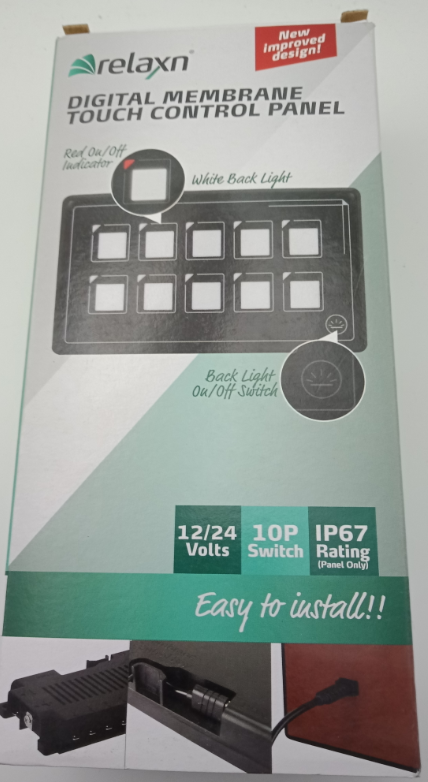Comprehending Membrane Switches Over: The Key to Reliable and durable Controls
Membrane layer switches represent an essential aspect of modern-day interface style, mixing capability with resilience in different applications. As we check out the complexities of membrane layer buttons, it becomes clear that their role in improving control systems is both intricate and profound, elevating questions about exactly how finest to utilize their capabilities in future developments.
What Are Membrane Buttons?
Membrane layer buttons are an advanced option in the world of interface technology, combining performance and style flawlessly. These devices serve as an interface between users and electronic systems, integrating several components into a compact format. Commonly built from versatile, slim layers of products, membrane switches are developed to react to touch, allowing users to interact with machinery and electronic devices successfully.
The main aspects of a membrane switch include a published circuit layer, visuals overlay, and a spacer layer that prevents unintended activation. The visuals overlay can be tailored to mirror brand identity or customer choices, improving aesthetics while ensuring functionality. Membrane buttons are generally made use of in different applications, including medical devices, customer electronic devices, and industrial tools, owing to their durability and resistance to environmental factors such as dampness and dust.
One of the vital benefits of membrane switches is their ability to endure deterioration, making them optimal for high-traffic environments. Furthermore, they are lightweight and need very little space, permitting ingenious designs in item development. On the whole, membrane layer switches stand for a efficient and sensible option for modern-day electronic user interfaces, marrying innovation with user-centric design concepts.

How Membrane Layer Switches Over Job
The operation of membrane changes hinges on a straightforward yet effective mechanism that converts user input right into electronic signals. When a customer presses the switch, the leading layer warps, allowing a conductive component in the circuit layer to make contact with an equivalent conductive pad on the underside of the visuals overlay.
The design of membrane buttons can vary, yet they commonly incorporate domes or responsive elements to supply responses to the customer, enhancing the total experience. The materials utilized in membrane layer buttons, such as polyester or polycarbonate, add to their resilience and resistance to ecological factors, including dampness and dust. In addition, the printed circuits are commonly encapsulated, which secures them from damage in time.

Advantages of Membrane Buttons
Among the main benefits of membrane buttons is their adaptability in design, permitting them to be tailored to satisfy details individual needs and visual requirements. This versatility includes different industries, where different forms, dimensions, and colors can be used to enhance customer communication and visual allure.
Furthermore, membrane layer switches are understood for their resilience. Created from robust products, they are resistant to dust, dampness, and physical wear, which significantly prolongs their life-span compared to typical mechanical buttons. This durability makes them especially ideal for high-traffic environments and applications needing durability.

Additionally, membrane buttons offer a structured profile, causing a thinner design that can be incorporated into numerous tools without adding mass. This feature not just boosts the aesthetic allure however likewise contributes to a more ergonomic product style.

Applications of Membrane Buttons
Versatile and easy to use, Full Article membrane buttons locate applications throughout a wide variety of sectors, consisting of medical devices, consumer electronic devices, and commercial devices. In the clinical field, these switches are important to tools such as analysis equipment, client tracking systems, and mixture pumps, where reliability and simplicity of cleansing are essential. Their ability to preserve and hold up against harsh atmospheres performance makes them suitable for such applications.
In customer electronic find out here devices, membrane layer buttons are made use of in products like microwaves, cleaning makers, and remotes - membrane switch. Their streamlined layout enables instinctive interface, boosting the overall individual experience while supplying longevity and resistance to wear and tear
Commercial equipment likewise gains from membrane switches, particularly in control panels for machinery and automation systems. These buttons supply protection against dust and moisture, ensuring consistent performance in difficult atmospheres. Moreover, their adjustable functions allow manufacturers to customize them to certain operational needs, boosting performance and capability.
Picking the Right Membrane Layer Switch
When choosing a membrane layer switch, it is important to consider different variables that influence performance and suitability for specific applications. The main factors to consider include ecological conditions, tactile responses, sturdiness, and design specs.
First, examine the operating environment; switches revealed to moisture, chemicals, or extreme temperature levels call for particular products to ensure durability and capability. Next, examine the demand for tactile comments. Relying on customer interaction, some applications might benefit from a responsive feedback to verify activation, while others might choose a non-tactile layout for aesthetic factors.
Resilience is an additional crucial factor; membrane layer buttons need to be developed to withstand frequent use, influences, and abrasion. Guarantee the chosen switch can withstand the anticipated lifecycle, particularly in high-usage situations.
Final Thought
In final thought, membrane layer switches over offer as crucial components in the style of sturdy and trustworthy control systems across different industries. The versatility of membrane layer switches permits for tailored services that fulfill certain operational demands, strengthening their significance in contemporary innovation.
Membrane layer switches stand for redirected here an important aspect of contemporary interface style, mixing performance with resilience in numerous applications.Membrane buttons are a sophisticated option in the world of individual interface modern technology, combining capability and design seamlessly. Normally constructed from versatile, slim layers of materials, membrane buttons are designed to respond to touch, allowing users to interact with machinery and digital devices efficiently.
The layout of membrane switches can vary, yet they frequently include domes or responsive elements to offer responses to the customer, enhancing the general experience.In final thought, membrane layer switches serve as necessary parts in the layout of resilient and trustworthy control systems across various markets.